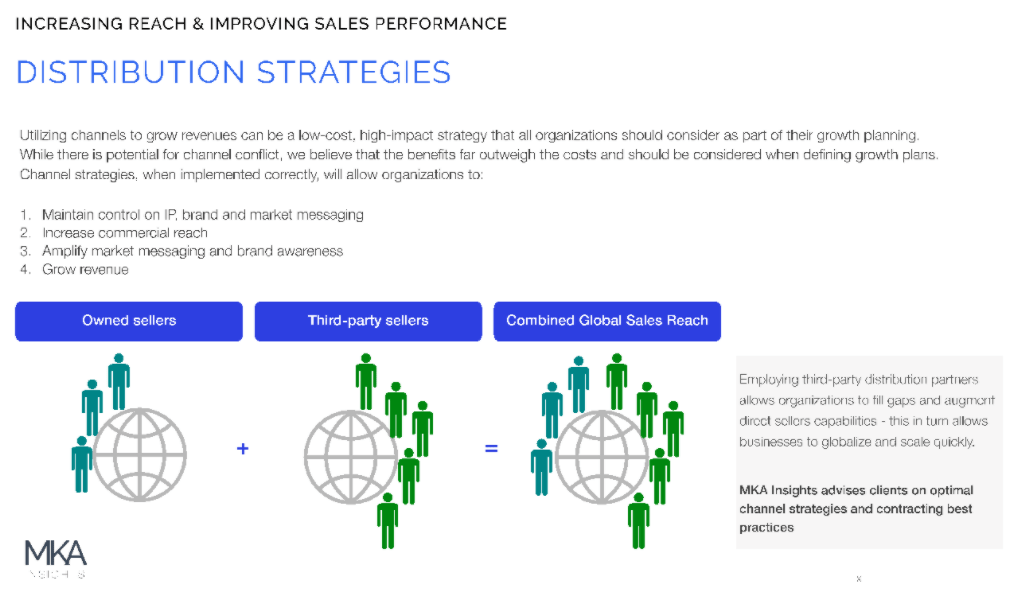Home > Insights > Sales & Marketing > Increasing Reach Through Distribution Strategies
Increasing Reach through Distribution Strategies
June, 2020

Distribution strategies (or channel strategies as they are often referred to) are a great passive opportunity to expand reach and access to new customers in new geographies and potentially into new markets.
When executed correctly, distribution strategies can provide a low-cost, high-impact benefit to the organization as part of its growth planning.
Normally, in order to sell a product/service, an organization has to hire sales professionals, train them, pay for them and provide on-going support to them. These direct costs are reflected on the sales & marketing lines of that organization’s income statement.
However, if an organization chooses to utilize a third-party distribution partner, several things change:
When executed correctly, distribution strategies can provide a low-cost, high-impact benefit to the organization as part of its growth planning.
Normally, in order to sell a product/service, an organization has to hire sales professionals, train them, pay for them and provide on-going support to them. These direct costs are reflected on the sales & marketing lines of that organization’s income statement.
However, if an organization chooses to utilize a third-party distribution partner, several things change:
- You just gained access to 20 to 250 more sales professionals than you had before
- These professionals represent an extension of your sales force and are trained on your product/service
- Amplify marketing messages using the extended reach of your new distribution partners
- There is no direct labor cost associated with the new sales professionals you just gained access to
- Potential to grow revenue by paying points on margin
These last two points are worth further discussion. While the firm engaging in distribution partners does not bear the direct cost of increasing its salesforce, it does (however) pay for the extension via points on margin. Often what is negotiated is how much margin to give to your distribution partner in order for access to their customers and sales professionals.
It is important to note that distribution strategies are not without conflict. The biggest conflicts always have to do with who owns the customer relationship and hence the sale/commission. However, with a plan and understanding of these conflicts, channel strategies can be a significant source of growth for any firm that wants to quickly increase sales and access to new customers, without having to provide the upfront capital outlay associated with headcount additions.
It is important to note that distribution strategies are not without conflict. The biggest conflicts always have to do with who owns the customer relationship and hence the sale/commission. However, with a plan and understanding of these conflicts, channel strategies can be a significant source of growth for any firm that wants to quickly increase sales and access to new customers, without having to provide the upfront capital outlay associated with headcount additions.



